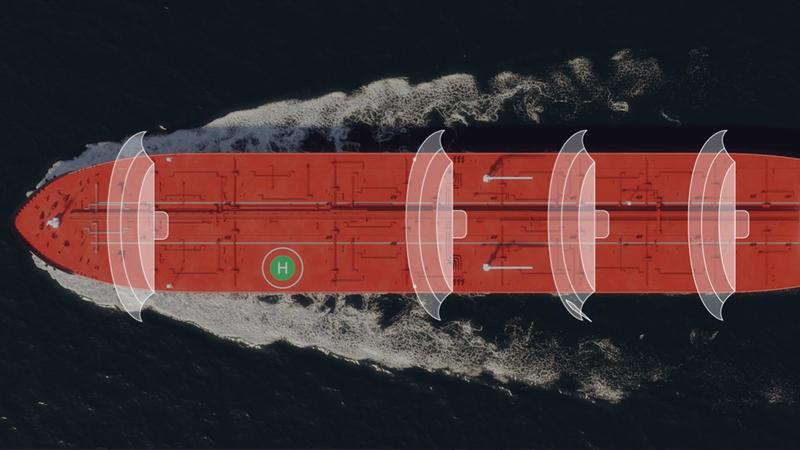The winds of change are blowing in shipping markets
Shipping is a large and growing source of greenhouse gas emissions. Maritime transport emits around 920 million tonnes of CO2 annually and is responsible for about 2,5% of global greenhouse gas (GHG) emissions and growing yearly. To mitigate these effects, in line with the internationally agreed temperature goals under Paris agreement, IMO has set the target of reducing total annual GHG emissions from shipping by at least 50% by 2050 compared to 2008 levels.
For sure this means the shipping industry needs to step into "green evolution" to lower its carbon footprint and rethink alternatives ways of moving cargo across oceans with more environmentally friendly ways. One promising area to look into is wind propulsion.
Reliable wind sensing technology to support Rotor Sail performance
Vaisala is cooperating with Norsepower whose Rotor Sail solution for wind-assisted vessel markets has recently won the air category of the international Energy Globe Award, recognizing it as a key driver for environmental change. Vaisala WMT700 wind sensor is directly integrated to Rotor Sail solution by delivering precise wind measurements that enable the Norsepower automation system to recognize and leverage all wind conditions, use the maximum available propulsion power and calculate the corresponding fuel savings.
Lately Norsepower has been co-operating to improve the operational performance of SEA-CARGO’s SC Connector vessel, where Vaisala’s wind sensing technology is also being used.
The world’s first installation of tiltable Rotor Sails into the SC Connector, SEA-CARGO’s Ro-Ro vessel, showcases that vessels that need to access height restricted routes, transiting under multiple bridges and powerlines, can benefit from this fuel and emissions-saving solution. Vaisala’s WINDCAP® Ultrasonic Wind Sensor WMT700 has been installed in the SC Connector to provide accurate and reliable wind measurements to optimize Rotor Sail performance.
The SC Connector sails between Western Norway, the Netherlands and the UK. Through the installation of Norsepower’s tiltable Rotor Sails, it has already gained significant benefits in power consistency: In favorable wind conditions, the vessel can transit faster on sailing alone than with the installed main engine. Improved seakeeping ability, reduction in fuel consumption, and compliance with EEXI/CII requirements are also major benefits.
Technology for challenging conditions
Accurate and reliable wind measurement is essential for optimizing Rotor Sail performance. Especially in demanding offshore conditions, where wind speeds are never constant from one second to the next, and snow and ice can interrupt wind measurement.
Norsepower chose the WINDCAP® Ultrasonic Wind Sensor WMT700 especially for its robust quality and rugged design that enable redundant measurement along six paths for accuracy in all wind directions. It was also important to have reliable wind sensing technology that stands up to corrosive conditions in the sea environment such as salt.
To defend against icing and freezing conditions in the North Sea, the device provides heating properties which protect the components and ensure uninterrupted, optimized performance for the Rotor Sails.
Towards greener shipping with the help of wind
Initial results of SEA-CARGO’s Rotor Sails performance highlight the benefits of wind propulsion. The Rotor Sails are commercially available, reduce the high carbon intensity gap until new fuels arrive, future proof assets, and save money now with the potential to save even more in the future.
Vaisala has long experience of working with the most accurate, reliable and dependable weather monitoring solutions. In addition to selected industries, like Maritime, we are serving globally most of the world meteorological organization with our weather products and services. We have a range of reference-grade wind observation technologies including robust wind sensors, multi-parameter weather sensors, wind lidars for remote observations and forecasting services that can be harnessed to support better performance and optimization of modern sailing technologies utilizing wind-assisted propulsion.
Sources:


